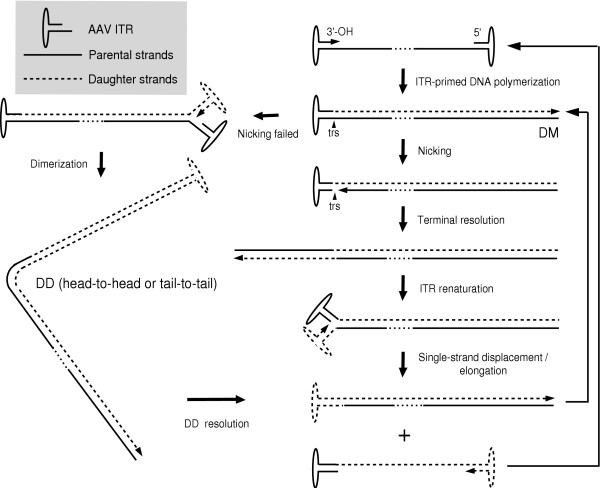Figure 3.
Schematic representation of the AAV DNA replication model. AAV DNA replication is thought to involve a self-priming single-strand displacement mechanism that is initiated by DNA polymerisation at the 3' hairpin primer of input single-stranded genomes. This leads to the formation of linear unit-length double-stranded molecules (duplex monomers, DMs) with one covalently closed end. These structures are resolved at the terminal resolution site (trs) by site-specific nicking of the parental strand opposite the original 3' end position (i.e., at nucleotide 125). The newly generated free 3' hydroxyl groups provide a substrate for DNA polymerases that unwind and copy the inverted terminal repeat (ITR). Finally, the palindromic linear duplex termini can renaturate into terminal hairpins putting the 3' hydroxyl groups in position for single-strand displacement synthesis. Next, single-stranded genomes and new DM replicative forms are made. When nicking does not occur, elongation proceeds through the covalently closed hairpin structure generating linear double-length double-stranded molecules (duplex dimers, DDs) with either a head-to-head or a tail-to-tail configuration. The DD replicative intermediates can be resolved to DMs through the AAV ITR sequences located at the axis of symmetry.

